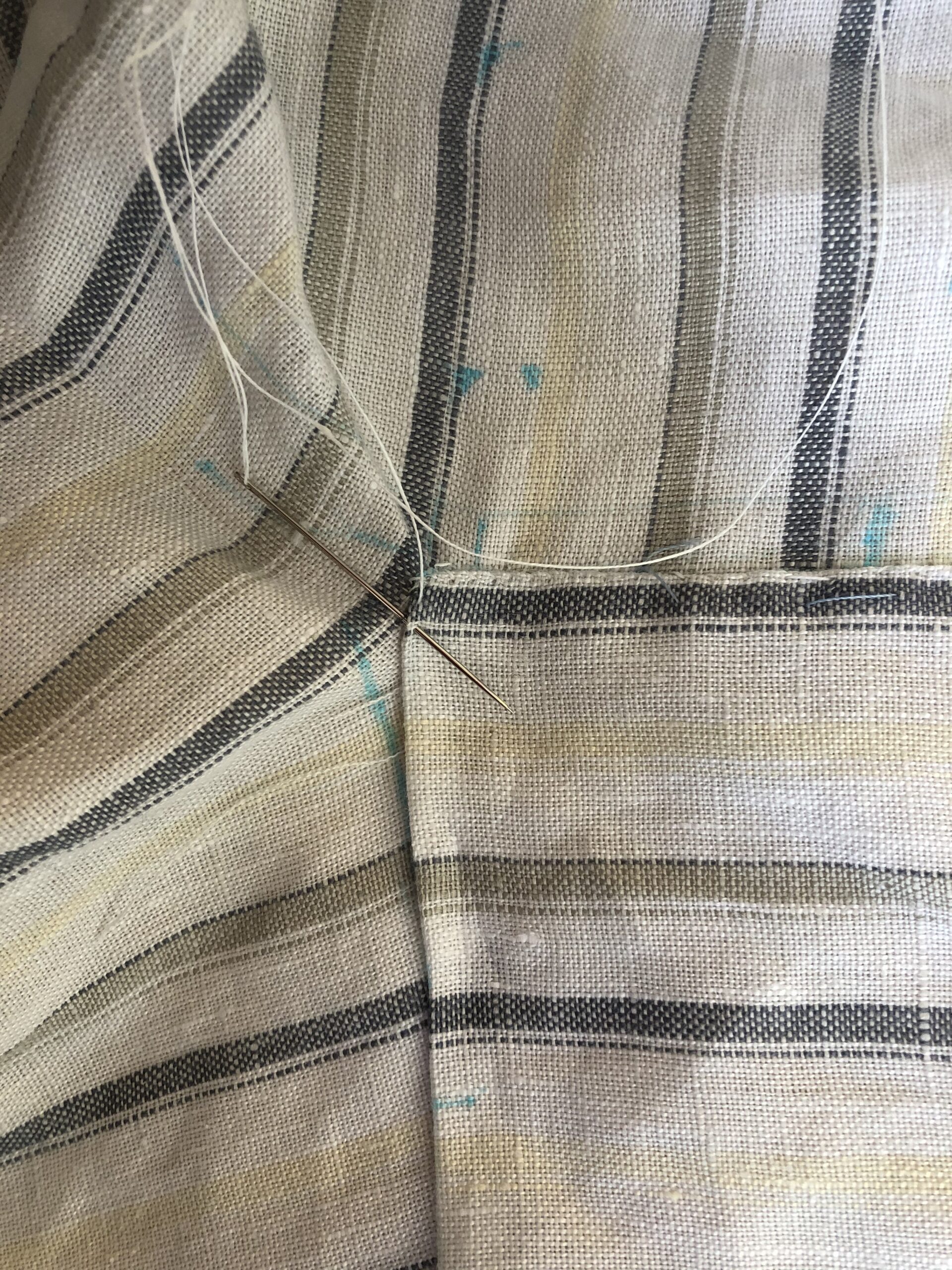
Back in Minnesota, I was gifted a piece of sunny summer linen from Burnley & Trowbridge. I knew just what I wanted to do with it – Burnley & Trowbridge had just release a new pattern, and I would turn my summer fabric into a summery 18th Century linen bedgown!
Linen is a slippery fabric that requires a little prep work for easy handling. The last time I had sewn striped linen I had not starched it. The spray starch available in Chile was staining my fabric sepia-colored , so I sewed a my striped linen English gown while the fabric was soft and limp – and while the fabric stayed its proper blue and white, the whole process was one prolonged stripey headache after another. This time I was on a new continent with different brands in the supermarket, and so I started the project by starching the ever-loving SNOOT out of it!

In fact, I became so hot and cross thinking about sewing that unstarched linen back in Chile that I starched this stuff until it was almost as crisp as paper.

Then I folded it, and folded it again, lined up the stripes, zapped it with some more starch (I may also have basted along all of the grey stripe lines, but that’s my own obsessive deal and I’m working through it) and only then did I laid out the pattern.

At about this juncture, a sewing friend sent me a kindly yet superior sort of email, pointing out that paper-stiff is “Exactly how Linen_Should_Be_Cut!!!!!!!!” * but that only about 3% of sewers bother to do it, and I that I should be feeling very proud of myself for going the entire 18 holes worth of stiffening.
I wrote back to say that besides the sepia stains of the Chilean stuff, the scent of every commercial spray starch I’ve ever tried gives me a headache that lasts all of the time I’m working on the fabric, so THIS had been a special effort. Expecting such miracles in the future would be optimism of the most outrageous sort.
I am hoping she was being tongue-in-cheek about what she wrote next, because she wrote back recommending potato starch. Put the potato starch, she said, and I quote: “in a spray bottle and spritz. It won’t smell at all, and keep your eyes open for insects and rodents!” **
Well, that suggestion an non-starter right out of the gate. I have never lived in a land that was not rich in cockroaches and silverfish. I DO hope that here in Canada I can find a brand of commercial starch that will keep me in that top 3% without offering the local fauna a full-on buffet.
* (all punctuation included here verbatim)
** (punctuation sensible but suggestion outrageous.)
Construction Details for an 18th Century linen Bedgown:
The gown was cut out from linen fabric starched to paper-stiffness.
The side seams were stitched and felled.
The collar was set and the fiddly little three-dimensional corner turns stitched. (all blue markings are made with water-soluble fabric pen. It washed out later.)


I had cut the sleeves so that the hems ran along on the selvage, so those I didn’t need to hem.
I did have to hem the front opening. And then I tried the bedgown on and the square corners dribbled down sideways like hems on a handkerchief skirt, so I pinned them up into a horizontal plumb line and hemmed THAT.

And then, by gosh, by george (and by golly, too) I had an 18th Century linen bedgown – all ready to wear!

(And if you want to make an 18th Century bedgown of your own, and it feels a bit tricky doing it alone, B&T now has a free bedgown sew-along for you! It takes you step by step with good company to cheer you on your way!)

One thought on “An 18th Century Linen Bedgown”